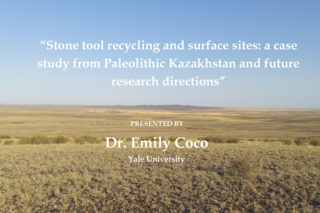Hybrid
Past Event: Stone tool recycling and surface sites: a case study from Paleolithic Kazakhstan and future research directions

This event has passed.
- Past Event: Fri Nov 22, 2024 12:00 p.m.—1:00 p.m.
51 Hillhouse Avenue New Haven, CT 06511
Human reuse of space and material culture is a well-documented behavior in prehistory,
yet the significance of stone tool recycling often remains underrepresented in our
interpretations of the lithic archaeological record. This oversight is problematic because
recycling can alter the appearance of archaeological assemblages and may have wide-
ranging impacts on other aspects of human behavior. Using agent-based modeling, we
are investigating the ways in which stone tool recycling influences the formation of the
archaeological record. Our models reveal that recycling and its impact on assemblage
composition are closely linked to artifact exposure. Consequently, surface sites were
likely key sites for repeated reoccupation and artifact reuse over extended periods. This
hypothesis is supported by archaeological investigations at surface deposits in semi-
arid Central Kazakhstan, where we observed notably high rates of stone tool recycling.
By recognizing stone tool recycling as a fundamental aspect of human tool use and
treating surface deposits as anthropogenic “raw” material sources, we aim to develop
new models of human landscape use and mobility that consider this regular reuse of
space.